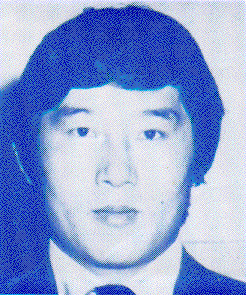
 |
 |
 |
 |
 |
 |
 |
|
Tae Kwon Do and Tradition
Although the name "Tae Kwon Do" is only about forty-five years old, the origins of the art reach far back into Korean history. During the sixth century, A.D. the Korean Peninsula was divided into three kingdoms, Shilla, Paek Ja, and Koguryo. Shilla, the smallest, was in constant peril of being over run by her more powerful neighbors for the advanced wealth, technical skills and art forms that she was famous for. In response to this pressure Shilla assembled an elite fighting corps of young members to the aristocracy which they call the "Hwarang Do," or "Flower of Youth." In addition to the regular military training of the day, the Hwarang subjected themselves to rigorous mental discipline and severe physical hardship, in order to condition the body and the wisdom to great strength and long endurance. Legend has it that they went into the mountains and along the seashore, studying the fighting techniques of nature to use to their own advantage. New movements were added to their own advantage. New movements were added to the existing form of weaponless fighting known as "Tae kyon," popular among the common people. In addition to these new foot and hand techniques, the Hwarang also incorporate into their art certain Buddhist exercises in intense concentration in order to achieve a harmonious integrity of mind and body.
Modern Tae Kwon Do owes much to the valorous Hwarang Do. Although no one can say exactly how the technical skills of today's practice compare with the killing techniques used to such great effect on ancient battle fields, some strong similarities certainly exist. There is no doubt at all that the ethical spririt of the art may be traced directly to the five pointed codes of conduct of the Hwarang, which emphasized loyalty to the nation, respect of parents, faithfulness among friends, courage in battle and an avoidance of unnecessary violence and killing. To consider Tae Kwon Do as simply a "SPORT" or just another means by getting in shape, is to deny the proud heritage of almost two thousand years. The combined thought and experience of centuries has produced our modern art which continues to draw strength and stability from the past.
Tae Kwon Do's emergence as an international sport came about primarily
through the development of the World Tae Kwon Do Federation. Inaugurated
in 1973, the W.T.F. set out to bring together the many diverse schools of
Tae Kwon Do. Under the leadership of its Presidents, Dr. Un Yong Kim,
the W.T.F. spent the next several years organizing international
competitions and referring clinics. In this manner rules have become
standardized, the quality of judging and refereeing is steadily rising
and increased emphasis has been placed on safety. With more and more
schools and instructors coming under the W.T.F. roof, the organization
has grown in strength, earning a higher visibility and legitimacy for Tae
Kwon Do. By 1975 the WTF had been recognized by General Association of
International Sports Federations (GAISF). In 1960 Tae Kwon Do was
formally recognized by the International Olympic committee as a class A
sport, leading the way for Tae Kwon Do to be admitted into the 1988,1992
Olympic Games, as a demonstration sport. It is the only striking martial
art to be given this distinction. Tae Kwon Do was first introduced into
the United States in the 1950's. Along the path of unification initiated
by the W.T.F., instructors in the United States organized and made
possible the admission of Tae Kwon Do into the Amateur Athletic Union
(AAU) in 1974. Under the sanction of the National AAU Tae Kwon Do Union,
using guidelines established by the W.T.F. Tae Kwon Do as a competitive
sport developed rapidly. In response to this growth, the NAAUTU was
renamed the United States Tae Kwon Do Union, Inc. in 1984 and offices
were established at the United states Olympic Complex in Colorado, Springs.
Today the USTU is the Tae Kwon Do federation recognized by the US Olympic
committee as the National Governing Body. Daily, Tae Kwon Do grows
stronger, not only through increased participation, but through increased
commitment within the Tae Kwon Do community to conduct scientific
research towards a modern understanding of Tae Kwon Do's dynamics.
Although a martial art with ancient roots, Tae Kwon Do continues to
evolve and benefit from this commitment. |
|
Copyright 2001 Carolina Web Servers
![]() . Send E-mail:
Technical |
Club.
. Send E-mail:
Technical |
Club.
 GRANDMASTER- YOO JUN SAENG
GRANDMASTER- YOO JUN SAENG